Peter Sanders
More Recent Advances in (Hyper)Graph Partitioning
May 28, 2022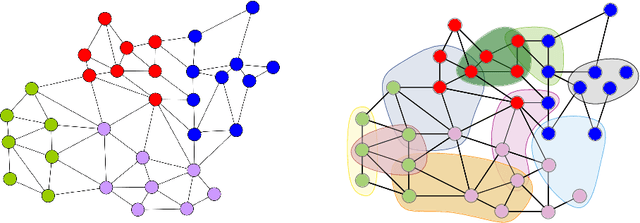

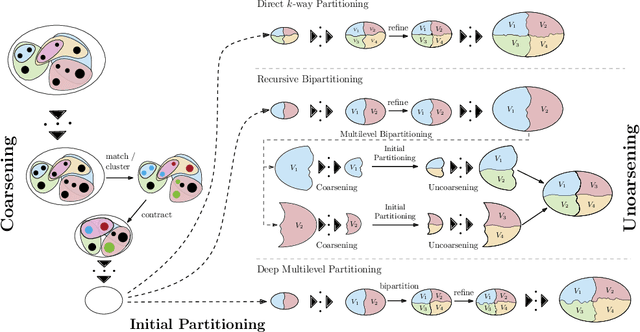

Abstract:In recent years, significant advances have been made in the design and evaluation of balanced (hyper)graph partitioning algorithms. We survey trends of the last decade in practical algorithms for balanced (hyper)graph partitioning together with future research directions. Our work serves as an update to a previous survey on the topic. In particular, the survey extends the previous survey by also covering hypergraph partitioning and streaming algorithms, and has an additional focus on parallel algorithms.
Vectorized and performance-portable Quicksort
May 12, 2022
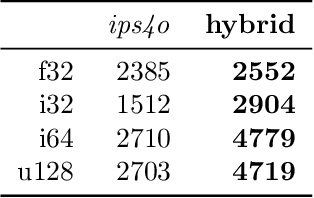
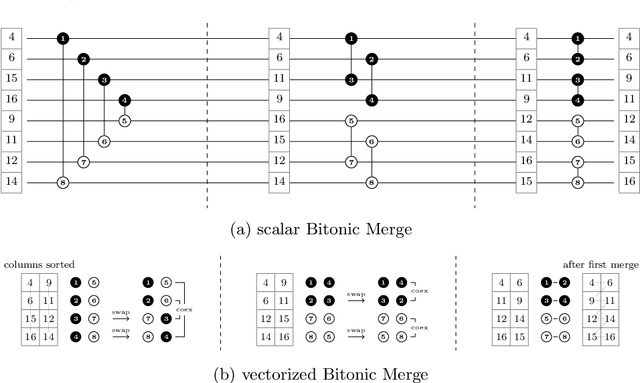

Abstract:Recent works showed that implementations of Quicksort using vector CPU instructions can outperform the non-vectorized algorithms in widespread use. However, these implementations are typically single-threaded, implemented for a particular instruction set, and restricted to a small set of key types. We lift these three restrictions: our proposed 'vqsort' algorithm integrates into the state-of-the-art parallel sorter 'ips4o', with a geometric mean speedup of 1.59. The same implementation works on seven instruction sets (including SVE and RISC-V V) across four platforms. It also supports floating-point and 16-128 bit integer keys. To the best of our knowledge, this is the fastest sort for non-tuple keys on CPUs, up to 20 times as fast as the sorting algorithms implemented in standard libraries. This paper focuses on the practical engineering aspects enabling the speed and portability, which we have not yet seen demonstrated for a Quicksort implementation. Furthermore, we introduce compact and transpose-free sorting networks for in-register sorting of small arrays, and a vector-friendly pivot sampling strategy that is robust against adversarial input.
3D Cell Nuclei Segmentation with Balanced Graph Partitioning
Feb 17, 2017
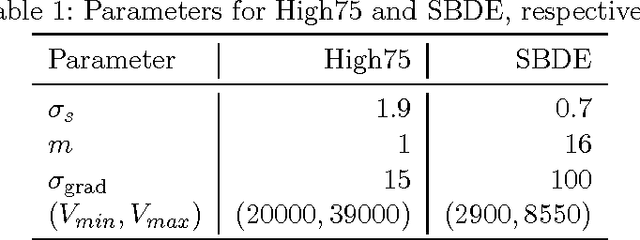
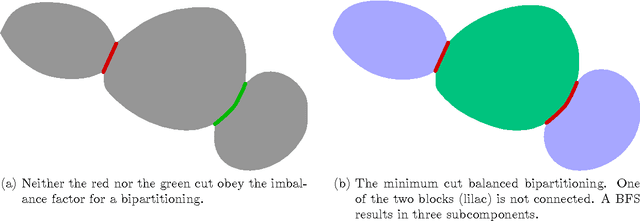

Abstract:Cell nuclei segmentation is one of the most important tasks in the analysis of biomedical images. With ever-growing sizes and amounts of three-dimensional images to be processed, there is a need for better and faster segmentation methods. Graph-based image segmentation has seen a rise in popularity in recent years, but is seen as very costly with regard to computational demand. We propose a new segmentation algorithm which overcomes these limitations. Our method uses recursive balanced graph partitioning to segment foreground components of a fast and efficient binarization. We construct a model for the cell nuclei to guide the partitioning process. Our algorithm is compared to other state-of-the-art segmentation algorithms in an experimental evaluation on two sets of realistically simulated inputs. Our method is faster, has similar or better quality and an acceptable memory overhead.
Distributed Evolutionary k-way Node Separators
Feb 06, 2017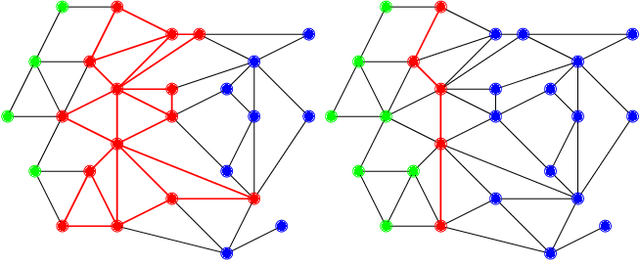
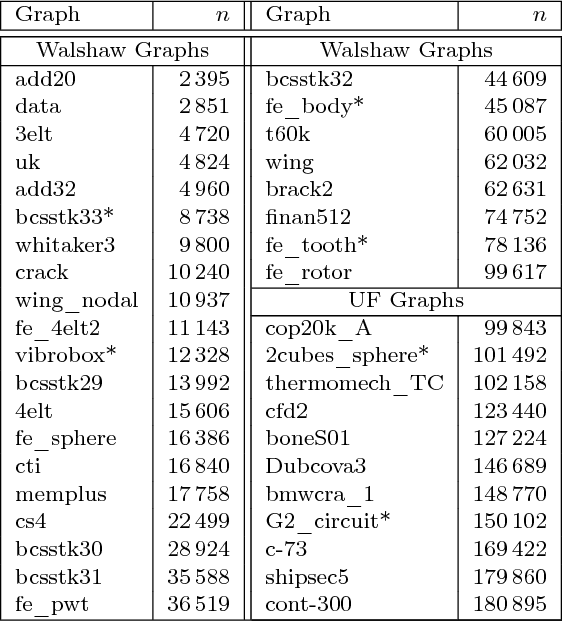
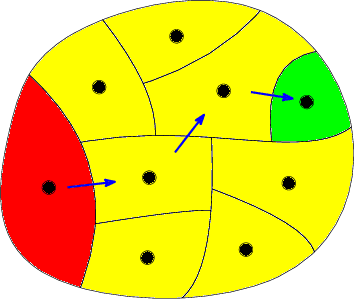
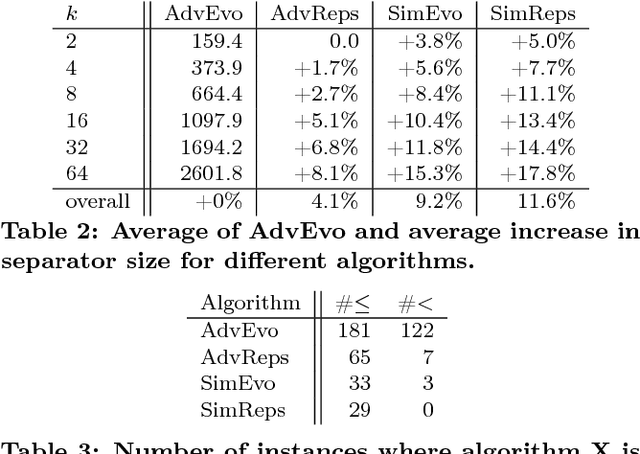
Abstract:Computing high quality node separators in large graphs is necessary for a variety of applications, ranging from divide-and-conquer algorithms to VLSI design. In this work, we present a novel distributed evolutionary algorithm tackling the k-way node separator problem. A key component of our contribution includes new k-way local search algorithms based on maximum flows. We combine our local search with a multilevel approach to compute an initial population for our evolutionary algorithm, and further show how to modify the coarsening stage of our multilevel algorithm to create effective combine and mutation operations. Lastly, we combine these techniques with a scalable communication protocol, producing a system that is able to compute high quality solutions in a short amount of time. Our experiments against competing algorithms show that our advanced evolutionary algorithm computes the best result on 94% of the chosen benchmark instances.
Generating Semi-Synthetic Validation Benchmarks for Embryomics
Apr 17, 2016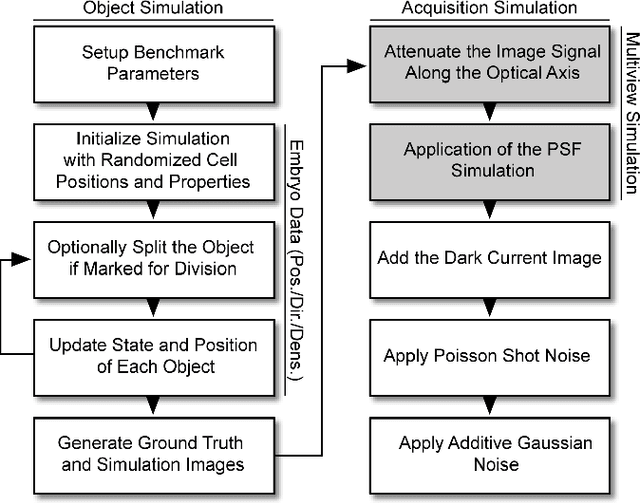
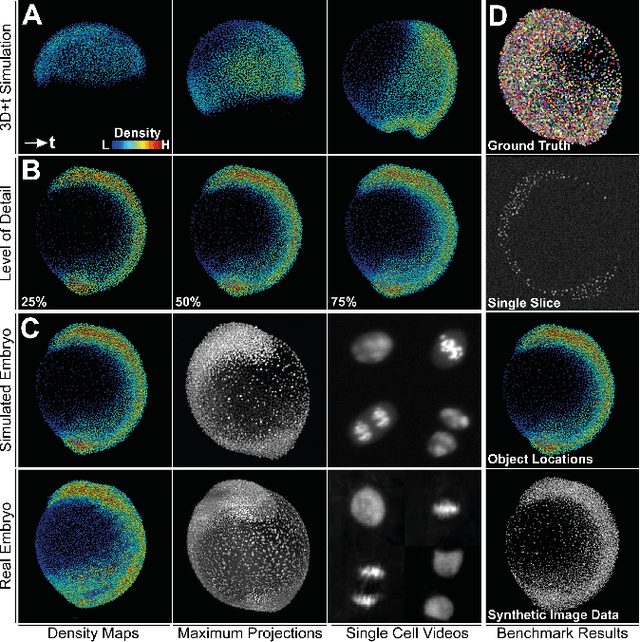
Abstract:Systematic validation is an essential part of algorithm development. The enormous dataset sizes and the complexity observed in many recent time-resolved 3D fluorescence microscopy imaging experiments, however, prohibit a comprehensive manual ground truth generation. Moreover, existing simulated benchmarks in this field are often too simple or too specialized to sufficiently validate the observed image analysis problems. We present a new semi-synthetic approach to generate realistic 3D+t benchmarks that combines challenging cellular movement dynamics of real embryos with simulated fluorescent nuclei and artificial image distortions including various parametrizable options like cell numbers, acquisition deficiencies or multiview simulations. We successfully applied the approach to simulate the development of a zebrafish embryo with thousands of cells over 14 hours of its early existence.
Finding Near-Optimal Independent Sets at Scale
Sep 02, 2015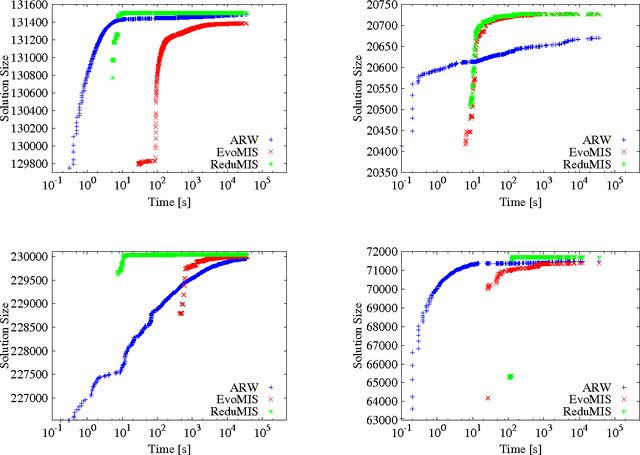
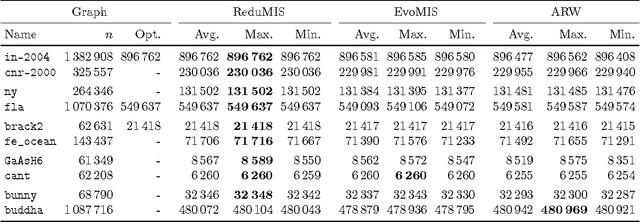


Abstract:The independent set problem is NP-hard and particularly difficult to solve in large sparse graphs. In this work, we develop an advanced evolutionary algorithm, which incorporates kernelization techniques to compute large independent sets in huge sparse networks. A recent exact algorithm has shown that large networks can be solved exactly by employing a branch-and-reduce technique that recursively kernelizes the graph and performs branching. However, one major drawback of their algorithm is that, for huge graphs, branching still can take exponential time. To avoid this problem, we recursively choose vertices that are likely to be in a large independent set (using an evolutionary approach), then further kernelize the graph. We show that identifying and removing vertices likely to be in large independent sets opens up the reduction space---which not only speeds up the computation of large independent sets drastically, but also enables us to compute high-quality independent sets on much larger instances than previously reported in the literature.
Incorporating Road Networks into Territory Design
May 05, 2015



Abstract:Given a set of basic areas, the territory design problem asks to create a predefined number of territories, each containing at least one basic area, such that an objective function is optimized. Desired properties of territories often include a reasonable balance, compact form, contiguity and small average journey times which are usually encoded in the objective function or formulated as constraints. We address the territory design problem by developing graph theoretic models that also consider the underlying road network. The derived graph models enable us to tackle the territory design problem by modifying graph partitioning algorithms and mixed integer programming formulations so that the objective of the planning problem is taken into account. We test and compare the algorithms on several real world instances.
Graph Partitioning for Independent Sets
Feb 05, 2015



Abstract:Computing maximum independent sets in graphs is an important problem in computer science. In this paper, we develop an evolutionary algorithm to tackle the problem. The core innovations of the algorithm are very natural combine operations based on graph partitioning and local search algorithms. More precisely, we employ a state-of-the-art graph partitioner to derive operations that enable us to quickly exchange whole blocks of given independent sets. To enhance newly computed offsprings we combine our operators with a local search algorithm. Our experimental evaluation indicates that we are able to outperform state-of-the-art algorithms on a variety of instances.
Parallel Graph Partitioning for Complex Networks
Jan 26, 2015



Abstract:Processing large complex networks like social networks or web graphs has recently attracted considerable interest. In order to do this in parallel, we need to partition them into pieces of about equal size. Unfortunately, previous parallel graph partitioners originally developed for more regular mesh-like networks do not work well for these networks. This paper addresses this problem by parallelizing and adapting the label propagation technique originally developed for graph clustering. By introducing size constraints, label propagation becomes applicable for both the coarsening and the refinement phase of multilevel graph partitioning. We obtain very high quality by applying a highly parallel evolutionary algorithm to the coarsened graph. The resulting system is both more scalable and achieves higher quality than state-of-the-art systems like ParMetis or PT-Scotch. For large complex networks the performance differences are very big. For example, our algorithm can partition a web graph with 3.3 billion edges in less than sixteen seconds using 512 cores of a high performance cluster while producing a high quality partition -- none of the competing systems can handle this graph on our system.
Think Locally, Act Globally: Perfectly Balanced Graph Partitioning
Oct 01, 2012



Abstract:We present a novel local improvement scheme for the perfectly balanced graph partitioning problem. This scheme encodes local searches that are not restricted to a balance constraint into a model allowing us to find combinations of these searches maintaining balance by applying a negative cycle detection algorithm. We combine this technique with an algorithm to balance unbalanced solutions and integrate it into a parallel multi-level evolutionary algorithm, KaFFPaE, to tackle the problem. Overall, we obtain a system that is fast on the one hand and on the other hand is able to improve or reproduce most of the best known perfectly balanced partitioning results ever reported in the literature.
 Add to Chrome
Add to Chrome Add to Firefox
Add to Firefox Add to Edge
Add to Edge